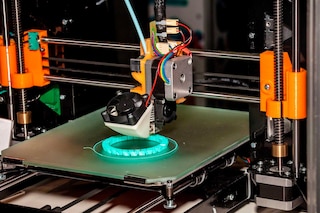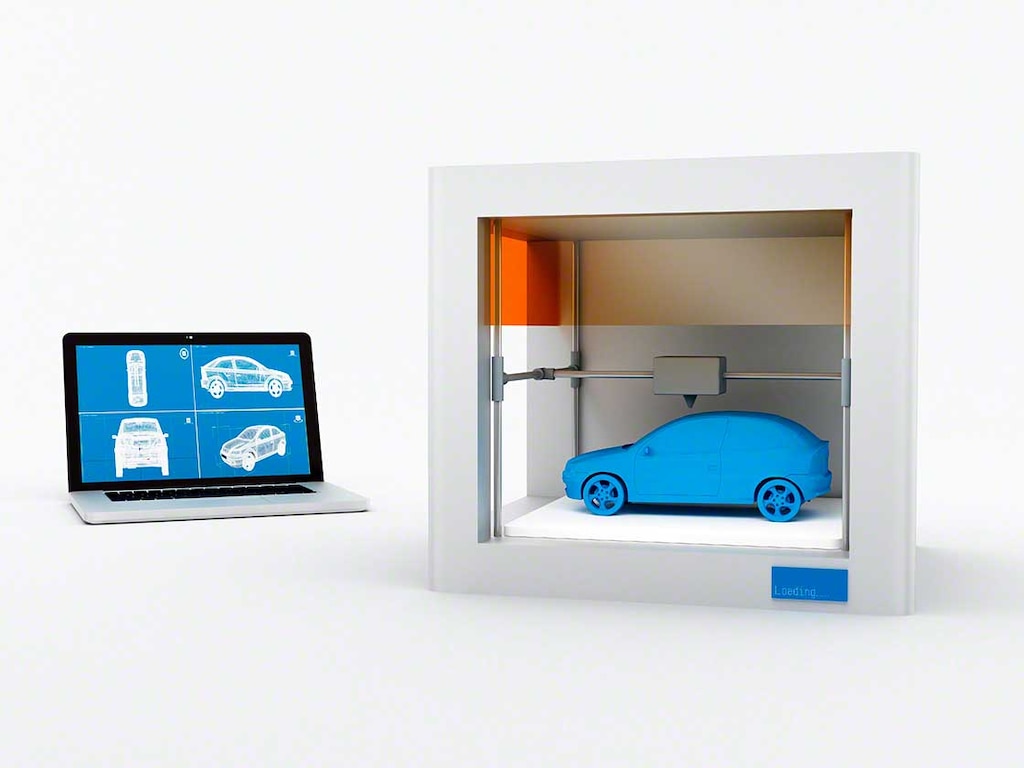
3D printing takes supply chain management into a new dimension
3D printing is a disruptive technology that could transform industry and, thus, logistics. The arrival of Industry 4.0 brings with it changes in product manufacturing methods as well as new challenges.
According to a study by consulting firm McKinsey, the 3D printing market is expected to grow exponentially in the coming years, potentially reaching $550 billion by 2025. Nevertheless, this technology is still in its infancy. Therefore, its impact on logistics raises many questions, for instance: What applications will it have? How will it affect companies’ supply chains? What advantages and difficulties will it present? We’ll tackle all of these topics below.
What’s a 3D printer and how does it work?
Let’s start with the definition. A 3D printer is a machine used to make replicas of 3D designs by adding filaments of a material. In other words, it takes a design created digitally and reproduces it in three dimensions.
In reality, the functions of 3D printers are similar to those of traditional printers: both obtain information from a digital document on what to print. The main difference between the two types lies in the execution: while traditional printers apply ink to paper to reproduce text and images, 3D printers employ materials to produce a three-dimensional object.
It consists of an overlay system in which layers of material (plastic, ceramics, metal, etc.) are added successively, giving form to an object (from decorative figures and cell phone cases to insoles and car parts). The items are light but also strong and resistant. Moreover, only essential materials are used, thus, minimising waste and polluting emissions.

Printing in three dimensions calls for the following:
- Digital design. All 3D printing requires an initial design. This can be created with specific programs or a scanner that generates the three-dimensional image of an object (to make identical replicas).
- Material. All kinds of materials are used, such as plastic, metal, ceramics, concrete and even food.
- 3D printer. This is the device that creates an object from a digital design by using specific material.
With only these three elements, products can be printed anywhere, for example, in installations near customers to reduce dependence on transport. Likewise, it can be done from home, as long as you have a 3D printer.
3D printing applications
Businesses continue to explore the potential of 3D printers, developing new applications based on market trends. It’s clear that this production system could serve to simplify the manufacture of complex goods and items that need to be personalised.
Examples of applications include:
- Medicine. 3D printers reproduce implants, hearing aids, prostheses and dental veneers.
- Automotive industry and spare parts. Companies in the automotive and aeronautics sectors are starting to implement 3D printers in their production processes to create parts and components. They serve to develop prototypes quickly, economically and effectively. In addition, they can produce parts (including pulleys, valves pistons and even vehicle chassis).
- Construction. 3D printing promises to revolutionise this sector in the future. It could be used to generate prototypes and structures with applications in the construction of bridges and buildings (bricks, for example). One of the most eagerly awaited and ambitious functions is most likely the construction of entire buildings with 3D printers.
3D printing and supply chain management
The greatest potential of 3D printers lies in their capacity to streamline production processes. This transformation will optimise processes and shorten delivery times.
Many warehouses store large amounts of raw materials waiting to be sent to the production lines when required. With 3D printing, on the other hand, it wouldn’t be necessary to store so much merchandise; the parts would be printed instantly, on demand. 3D printers could ensure speed and safety in the manufacture of all types of components.
For example, the automotive and aeronautical industries will undoubtedly benefit from this change, given that they require very flexible logistics operations and a just-in-time working system to meet their objectives. This means they must be perfectly in sync with suppliers in order to receive the necessary parts and materials on time. Any delivery delays could mean costly interruptions to production processes, which must be prevented at all costs.
3D printers also facilitate product customisation, as they can create products adapted to customers’ needs. The logistics difficulty in this sense lies in how to seamlessly distribute the growing number of personalised items. Here, the use of a warehouse management system (such as Easy WMS by Mecalux) is vital for operating in a more agile way. This software is charged with supervising product customisation and kitting processes.
Merchandise personalisation is a process carried out just before the item is sent to the end customer. This practice is known as postponement . It consists of delaying certain supply chain activities until the customer’s demand is met.
There’s no doubt that 3D printing could shift the paradigm for supply chain management and goods transport. On the one hand, it will cut down on movements of certain products (for example, car parts could be printed directly on the production lines). On the other hand, it will increase the transport of the materials to be printed. As 3D printers become more accessible to the general public, the market for home delivery of materials will grow.
Advantages of 3D printing in logistics
The use of 3D printers in logistics could bring several advantages:
- Reduced inventory. Manufacturing on demand lowers storage costs, as you only store the materials required and just-finished products (and for a limited time) before sending them to customers.
- Leveraged surface area. By storing less stock, the storage area you need will be smaller (which is especially beneficial for small and medium-sized companies).
- Decrease in shipments. Since you don’t need a huge surface area to print a product, this process can be carried out in any installation near your customers. Plus, carriers travel shorter distances when delivering goods, resulting in less pollution.
- Agility and on-time deliveries. With traditional production, products had to go through multiple phases before reaching end customers. By contrast, 3D printers greatly simplify the complexity of product manufacturing processes, producing the items more quickly so as to distribute them in the shortest time possible.
- Fewer returns. Product personalisation is a way to ensure customer satisfaction and, in turn, prevent returns.
Difficulties and limitations of 3D printing
In spite of the advantages of 3D printing, this technology also comes with some drawbacks:
- Technology in development. Nowadays, the applications and functions of 3D printing are being explored and developed. It hasn’t yet become that widespread and well established in the market.
- Limited product size. According to the capacity of each 3D model, items will be manufactured in one size or another.
- Printing times. The printing process ranges from 10 minutes to two hours, depending on the item in question. Additionally, the parts need time to cool off.
- High cost. Currently, 3D printers are expensive. Moreover, you have to add in the price of the materials, the necessary training and maintenance.

3D printing and the supply chain: endless possibilities
3D printing is one of the technologies with the most potential to transform logistics. Today, the applications it could have in the market are still being explored. Its appeal, however, lies in its easy product personalisation and simple production process.
Logistics adopts the most modern technology on the market — from automation to cobots and 3D printing — to simplify all complexities and speed up product deliveries.
Despite the advantages 3D printing could offer the logistics sector (mainly in terms of reducing inventory), this technology will entail a radical change in the supply chains of a multitude of companies. Consequently, they will be compelled to cross new frontiers.
At Mecalux, we have over 50 years of experience fulfiling all kinds of logistics needs, however demanding they may be. Get in touch with us if you plan on modernising your supply chain with the most cutting-edge storage solutions on the market.
